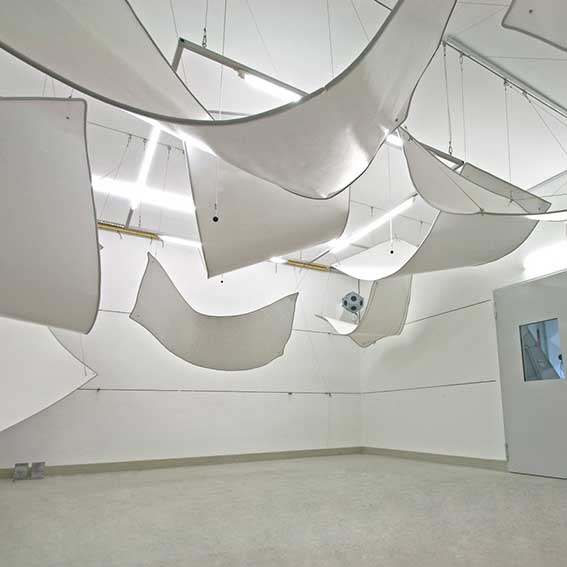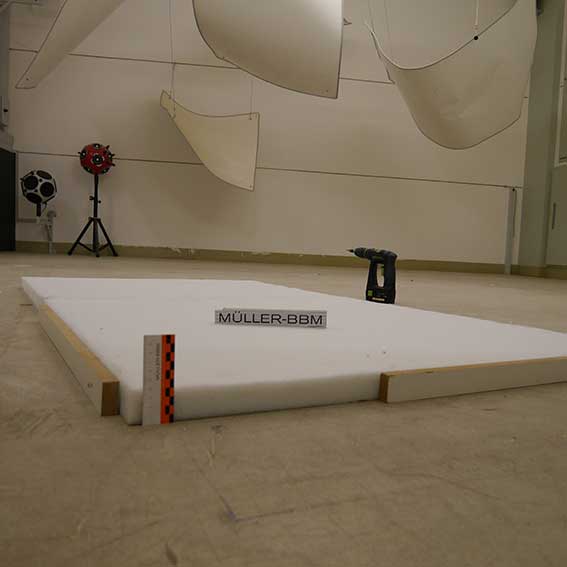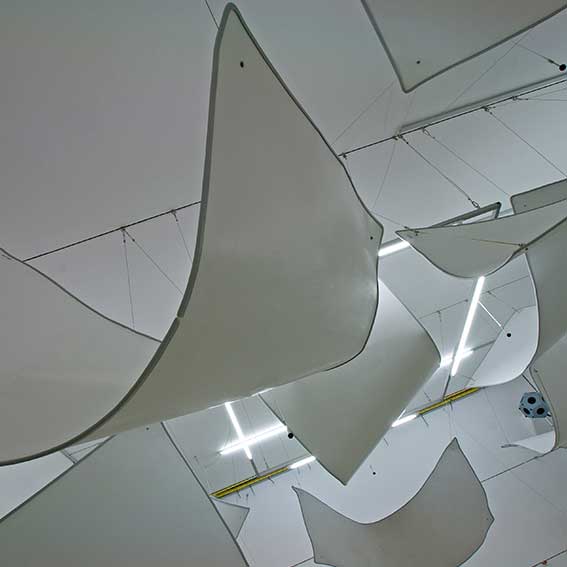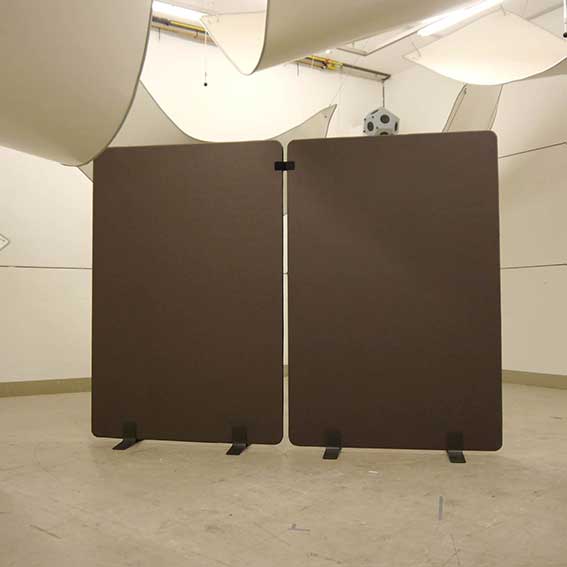m|abshall
Measurement system for the determination
of sound absorption in reverberation rooms
In the reverberation room, reverberation time measurements can be used to determine the sound absorption coefficient of planar objects and the equivalent sound absorption area of single objects for diffuse sound incidence. In large reverberation rooms, measurements are made according to ISO 354 (V ≥ 150 m³) or ASTM C423 (V ≥ 150 m³) and in small rooms according to SAE J2883 (V ≥ 25 m³) or special factory standards such as PR 353.
The software m|abshall enables the measurement and evaluation of sound absorption according to all known test specifications.
Typical applications of measurements of sound absorption in the diffuse sound field:
- product specification:
Manufacturers and suppliers of sound absorbing components must specify the sound absorption coefficient of their products. This applies to construction products and noise barriers as well as to products used in motor or rail vehicles. - product development:
The determination of sound absorption in the reverberation room during product development is the most accurate method to develop optimal products. - quality assurance in production of sound absorbers:
Generally, the reverberation room method is too expensive for the quality assurance due to the required specimen dimensions, which is why measurements of sound absorption in the impedance tube and measurements of airflow resistance are preferred for this purpose.
For the determination of sound absorption the reverberation time is determined with and without sample in the reverberation room. Additionally, the climatic boundary conditions such as air pressure, temperature and humidity are recorded during the measurement to consider the influence of air absorption.
The sound absorption coefficients determined in small reverberation rooms with correspondingly reduced specimen dimensions differ systematically from measurement results from large reverberation rooms according to ISO 354 and ASTM C423. In order to convert the results from small reverberation rooms to large reverberation rooms, a volume correction is required for the low frequencies and a correction for the entire frequency range due to the different ratio of perimeter to surface. In the software m|abshall there is therefore the possibility for systematic and frequency-dependent correction of the sound absorption coefficients for different reverberation rooms defined in the software depending on the sample surface.
The measurement system consists of the following components:
- typically six 1/4“ microphones and associated signal conditioning
- typically two to four dodecahedrons as sound sources and associated power amplifier
- audio interface (audio sound card with the required number of input and output channels)
- sensors for acquisition of air pressure, temperature and humidity
The software m|abshall is suitable for all known methods for determining sound absorption in reverberation rooms.
- control of an audio interface for measuring the sound pressure signals of the microphones
- free selection of loudspeaker and microphone channels of the audio interface
- generation of any swept sine signal for excitation of the dodecahedrons,
switching between the different dodecahedrons manually via switches or optionally using software-controlled relays - measurement of impulse responses using a swept sine excitation and correlation evaluation on the excitation signal
- calculation of the reverberation time from the time inverse band filtered impulse responses using Schröder backward integration in one-third bands.
- display of the reverberation times with and without sample and the measurement results directly after the measurement
- analysis tools for graphical display of measured raw time data and impulse responses in the time and frequency range
- evaluation of the sound absorption coefficient and the absorption area according to ISO 354 with consideration of the automatically or manually recorded climate data without and with test object
- possibility of systematic and frequency-dependent correction of sound absorption coefficients for different reverberation rooms: systematic and cabin-specific corrections, sample area-dependent corrections
- automatic creation of freely configurable result sheets with tabular and graphical display of the measurement results in German, English, French or Italian
- export of the measurement data including test conditions and sample designations to a CSV file
- program interface in English
In order to use the software, a personal computer running Windows version 10 operating system with a free USB port (version 2.0 or above) is required.





